Opinion & Analysis
The myth behind the “one-way miss”
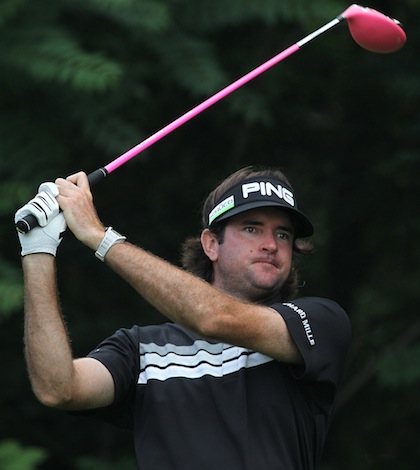
We often hear from professional golfers how important it is to have a “one way miss’”and to be able to “take one side of the golf course out of play” in order to drive the ball more effectively. However, statistical evidence indicates that this is not quite an accurate depiction of how the best golfers in the world effectively drive the ball.
A metric that I have explored quite frequently is “miss bias.” This is the percentage of time a player misses a fairway right or left. What I have found is that there is no direction that is better to miss the fairway. Having a right miss bias is equal to having a left miss bias. Typically, what is more important is the ratio of the miss bias.
I feel the best indicator of driving success is to look at the top players in my “Driving Effectiveness” ranking. Driving Effectiveness is based on algorithm that considers the following metrics:
- Driving distance
- Fairway percentage
- Average distance from the edge of fairway (on drives that miss the fairway)
- Percentage of fairway bunkers hit
- Missed fairways and other (shots that end up in the trees, water, O.B, etc.)
Here is a table with the current top-20 players in Driving Effectiveness and their Miss Bias.
As the chart shows, 13 of the top-20 ranked players have a miss bias that is no more than 55 percent either way.
Now, let’s look at this year’s players with miss biases that are greater than 60 percent and their rankings in Driving Effectiveness.
Tour golfers can strike the ball well off the tee with a large miss bias, however, not one of these players on the list is ranked in the top 20 in Driving Effectiveness. Furthermore, let’s take a look at the players on that list that played last on the Tour last season.
The chart shows that if the player’s miss bias in 2012 was less than 60 percent, they were typically more effective off the tee. Rod Pampling, Rory McIlroy, John Huh and Tiger Woods are examples of golfers that had a miss bias less than 60 percent in 2012 and also drove the ball much more effectively as well.
What the data tells me is that trying to taking one side “out of play” is not great advice if you wish to be an effective driver of the ball. There are likely too many holes where the golfer has to favor the right side or the left side.
What I’ve seen from my tour players is that having a “one-way miss” is actually more about having a “one-way curve.” If a golfer tend to hit a draw with their stock swing, they’ll be best served to continue to hit draws or straight balls off the tee. When many golfers try to alternate between draws and fades, however, they often risk getting into trouble and being less effective off the tee.
If a player has a more extreme miss bias, that tends to indicate a common “big miss” that they cannot rid themselves of. And that miss may cost them down the line.
I recommend that amateur golfers forget about having a “one-way miss.” They need to concern themselves with getting the ball to curve one way, and identify that common “big miss” and work to make it a smaller one.
Opinion & Analysis
The 2 primary challenges golf equipment companies face

As the editor-in-chief of this website and an observer of the GolfWRX forums and other online golf equipment discourse for over a decade, I’m pretty well attuned to the grunts and grumbles of a significant portion of the golf equipment purchasing spectrum. And before you accuse me of lording above all in some digital ivory tower, I’d like to offer that I worked at golf courses (public and private) for years prior to picking up my pen, so I’m well-versed in the non-degenerate golf equipment consumers out there. I touched (green)grass (retail)!
Complaints about the ills of and related to the OEMs usually follow some version of: Product cycles are too short for real innovation, tour equipment isn’t the same as retail (which is largely not true, by the way), too much is invested in marketing and not enough in R&D, top staffer X hasn’t even put the new driver in play, so it’s obviously not superior to the previous generation, prices are too high, and on and on.
Without digging into the merits of any of these claims, which I believe are mostly red herrings, I’d like to bring into view of our rangefinder what I believe to be the two primary difficulties golf equipment companies face.
One: As Terry Koehler, back when he was the CEO of Ben Hogan, told me at the time of the Ft Worth irons launch, if you can’t regularly hit the golf ball in a coin-sized area in the middle of the face, there’s not a ton that iron technology can do for you. Now, this is less true now with respect to irons than when he said it, and is less and less true by degrees as the clubs get larger (utilities, fairways, hybrids, drivers), but there remains a great deal of golf equipment truth in that statement. Think about it — which is to say, in TL;DR fashion, get lessons from a qualified instructor who will teach you about the fundamentals of repeatable impact and how the golf swing works, not just offer band-aid fixes. If you can’t repeatably deliver the golf club to the golf ball in something resembling the manner it was designed for, how can you expect to be getting the most out of the club — put another way, the maximum value from your investment?
Similarly, game improvement equipment can only improve your game if you game it. In other words, get fit for the clubs you ought to be playing rather than filling the bag with the ones you wish you could hit or used to be able to hit. Of course, don’t do this if you don’t care about performance and just want to hit a forged blade while playing off an 18 handicap. That’s absolutely fine. There were plenty of members in clubs back in the day playing Hogan Apex or Mizuno MP-32 irons who had no business doing so from a ballstriking standpoint, but they enjoyed their look, feel, and complementary qualities to their Gatsby hats and cashmere sweaters. Do what brings you a measure of joy in this maddening game.
Now, the second issue. This is not a plea for non-conforming equipment; rather, it is a statement of fact. USGA/R&A limits on every facet of golf equipment are detrimental to golf equipment manufacturers. Sure, you know this, but do you think about it as it applies to almost every element of equipment? A 500cc driver would be inherently more forgiving than a 460cc, as one with a COR measurement in excess of 0.83. 50-inch shafts. Box grooves. And on and on.
Would fewer regulations be objectively bad for the game? Would this erode its soul? Fortunately, that’s beside the point of this exercise, which is merely to point out the facts. The fact, in this case, is that equipment restrictions and regulations are the slaughterbench of an abundance of innovation in the golf equipment space. Is this for the best? Well, now I’ve asked the question twice and might as well give a partial response, I guess my answer to that would be, “It depends on what type of golf you’re playing and who you’re playing it with.”
For my part, I don’t mind embarrassing myself with vintage blades and persimmons chasing after the quasi-spiritual elevation of a well-struck shot, but that’s just me. Plenty of folks don’t give a damn if their grooves are conforming. Plenty of folks think the folks in Liberty Corner ought to add a prison to the museum for such offences. And those are just a few of the considerations for the amateur game — which doesn’t get inside the gallery ropes of the pro game…
Different strokes in the game of golf, in my humble opinion.
Anyway, I believe equipment company engineers are genuinely trying to build better equipment year over year. The marketing departments are trying to find ways to make this equipment appeal to the broadest segment of the golf market possible. All of this against (1) the backdrop of — at least for now — firm product cycles. And golfers who, with their ~15 average handicap (men), for the most part, are not striping the golf ball like Tiger in his prime and seem to have less and less time year over year to practice and improve. (2) Regulations that massively restrict what they’re able to do…
That’s the landscape as I see it and the real headwinds for golf equipment companies. No doubt, there’s more I haven’t considered, but I think the previous is a better — and better faith — point of departure when formulating any serious commentary on the golf equipment world than some of the more cynical and conspiratorial takes I hear.
Agree? Disagree? Think I’m worthy of an Adam Hadwin-esque security guard tackle? Let me know in the comments.
@golfoncbs The infamous Adam Hadwin tackle ? #golf #fyp #canada #pgatour #adamhadwin ? Ghibli-style nostalgic waltz – MaSssuguMusic
Podcasts
Fore Love of Golf: Introducing a new club concept

Episode #16 brings us Cliff McKinney. Cliff is the founder of Old Charlie Golf Club, a new club, and concept, to be built in the Florida panhandle. The model is quite interesting and aims to make great, private golf more affordable. We hope you enjoy the show!
Opinion & Analysis
On Scottie Scheffler wondering ‘What’s the point of winning?’

Last week, I came across a reel from BBC Sport on Instagram featuring Scottie Scheffler speaking to the media ahead of The Open at Royal Portrush. In it, he shared that he often wonders what the point is of wanting to win tournaments so badly — especially when he knows, deep down, that it doesn’t lead to a truly fulfilling life.
View this post on Instagram
“Is it great to be able to win tournaments and to accomplish the things I have in the game of golf? Yeah, it brings tears to my eyes just to think about it because I’ve literally worked my entire life to be good at this sport,” Scheffler said. “To have that kind of sense of accomplishment, I think, is a pretty cool feeling. To get to live out your dreams is very special, but at the end of the day, I’m not out here to inspire the next generation of golfers. I’m not out here to inspire someone to be the best player in the world, because what’s the point?”
Ironically — or perhaps perfectly — he went on to win the claret jug.
That question — what’s the point of winning? — cuts straight to the heart of the human journey.
As someone who’s spent over two decades in the trenches of professional golf, and in deep study of the mental, emotional, and spiritual dimensions of the game, I see Scottie’s inner conflict as a sign of soul evolution in motion.
I came to golf late. I wasn’t a junior standout or college All-American. At 27, I left a steady corporate job to see if I could be on the PGA Tour starting as a 14-handicap, average-length hitter. Over the years, my journey has been defined less by trophies and more by the relentless effort to navigate the deeply inequitable and gated system of professional golf — an effort that ultimately turned inward and helped me evolve as both a golfer and a person.
One perspective that helped me make sense of this inner dissonance around competition and our culture’s tendency to overvalue winning is the idea of soul evolution.
The University of Virginia’s Division of Perceptual Studies has done extensive research on reincarnation, and Netflix’s Surviving Death (Episode 6) explores the topic, too. Whether you take it literally or metaphorically, the idea that we’re on a long arc of growth — from beginner to sage elder — offers a profound perspective.
If you accept the premise literally, then terms like “young soul” and “old soul” start to hold meaning. However, even if we set the word “soul” aside, it’s easy to see that different levels of life experience produce different worldviews.
Newer souls — or people in earlier stages of their development — may be curious and kind but still lack discernment or depth. There is a naivety, and they don’t yet question as deeply, tending to see things in black and white, partly because certainty feels safer than confronting the unknown.
As we gain more experience, we begin to experiment. We test limits. We chase extreme external goals — sometimes at the expense of health, relationships, or inner peace — still operating from hunger, ambition, and the fragility of the ego.
It’s a necessary stage, but often a turbulent and unfulfilling one.
David Duval fell off the map after reaching World No. 1. Bubba Watson had his own “Is this it?” moment with his caddie, Ted Scott, after winning the Masters.
In Aaron Rodgers: Enigma, reflecting on his 2011 Super Bowl win, Rodgers said:
“Now I’ve accomplished the only thing that I really, really wanted to do in my life. Now what? I was like, ‘Did I aim at the wrong thing? Did I spend too much time thinking about stuff that ultimately doesn’t give you true happiness?’”
Jim Carrey once said, “I think everybody should get rich and famous and do everything they ever dreamed of so they can see that it’s not the answer.”
Eventually, though, something shifts.
We begin to see in shades of gray. Winning, dominating, accumulating—these pursuits lose their shine. The rewards feel more fleeting. Living in a constant state of fight-or-flight makes us feel alive, yes, but not happy and joyful.
Compassion begins to replace ambition. Love, presence, and gratitude become more fulfilling than status, profits, or trophies. We crave balance over burnout. Collaboration over competition. Meaning over metrics.
Interestingly, if we zoom out, we can apply this same model to nations and cultures. Countries, like people, have a collective “soul stage” made up of the individuals within them.
Take the United States, for example. I’d place it as a mid-level soul: highly competitive and deeply driven, but still learning emotional maturity. Still uncomfortable with nuance. Still believing that more is always better. Despite its global wins, the U.S. currently ranks just 23rd in happiness (as of 2025). You might liken it to a gifted teenager—bold, eager, and ambitious, but angsty and still figuring out how to live well and in balance. As much as a parent wants to protect their child, sometimes the child has to make their own mistakes to truly grow.
So when Scottie Scheffler wonders what the point of winning is, I don’t see someone losing strength.
I see someone evolving.
He’s beginning to look beyond the leaderboard. Beyond metrics of success that carry a lower vibration. And yet, in a poetic twist, Scheffler did go on to win The Open. But that only reinforces the point: even at the pinnacle, the question remains. And if more of us in the golf and sports world — and in U.S. culture at large — started asking similar questions, we might discover that the more meaningful trophy isn’t about accumulating or beating others at all costs.
It’s about awakening and evolving to something more than winning could ever promise.





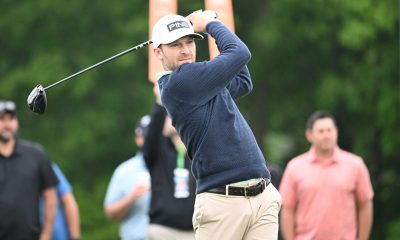

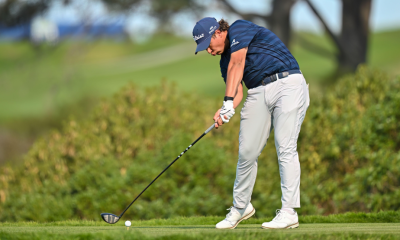

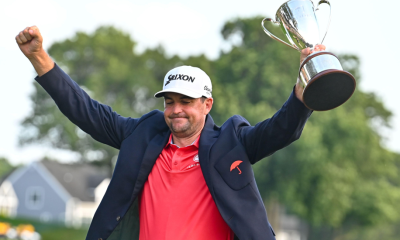



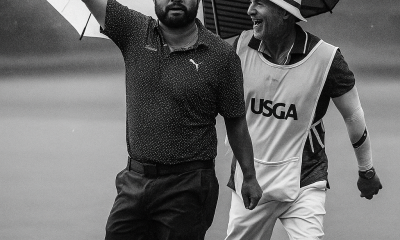

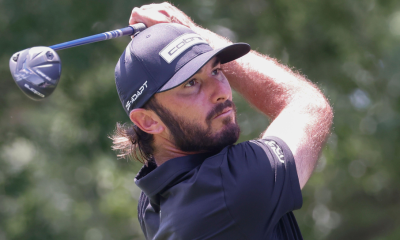









Pingback: Tips in Beating a Pro Golfer – Aymerich Golf Club
TheFightingEdFioris
Sep 4, 2014 at 1:28 pm
Cool article by the way. Always enjoy your writing.
TheFightingEdFioris
Sep 4, 2014 at 1:28 pm
No look into what they actually scored on the hole and/or the actual distance they missed the fairway by? Were Tiger’s driving stats better in 2012 when he missed it left more than right? Apparently… But did the left miss cost him a shot in a few tournaments? Absolutely (see 2012 PGA when Rory missed left off the tee basically zero times)
I am not disagreeing, you’ve clearly done a lot more homework on this than I have. But would you agree Rich that the biggest advantage to feeling that you have a one way miss is mental? To stand on a tee box and know you can swing as hard as you want and not even sniff the OB left, or not worry about blocking it high and right.
Jtriscott
Aug 7, 2013 at 12:06 pm
I think this is pretty simple…
There is usually a side on the hole that is a much better miss (ie, hazard, OB, etc).
For the RH golfer:
If the good miss is RIGHT, I just weaken my grip and make sure I am not going to HOOK the ball.
If the good miss is LEFT, I strengthen my grip and make sure I am not going to SLICE the ball.
It works all the time, 60% of the time!
Geoffrey
Apr 9, 2014 at 12:09 pm
Is there any way to interpret a players extreme left vs right miss tendency to determine if a player’s primary shot is a draw vs a fade?
Mike
Jul 31, 2013 at 9:01 pm
This article could not be more on point! The best players know which direction their ball will curve on less than perfect shots. When they talk about eliminating one side of the course, what they mean is eliminating one direction the ball will curve on their poor shots. And Matteo, as a club fitter you should know that tour players have their own clubs built with exactly this in mind. Nice article.
CT
Jul 31, 2013 at 11:22 am
“What I’ve seen from my tour players is that having a “one-way miss” is actually more about having a “one-way curve.” ”
You should make that the title of the article, and the first sentence summary to set the writing, because this information is great stuff. Because that what it is – it’s all about the favored curve.
Richie Hunt
Jul 31, 2013 at 2:22 pm
Thanks for the kind words. I had a little difficulty coming up with a good title.
Dustin
Jul 30, 2013 at 8:52 pm
The one way miss is a draw or fade. I can miss a fade down the left and a draw down the right. Point is I want a shot that I know will fade or draw.
Steve
Jul 30, 2013 at 5:53 pm
Good article…working with tour players it makes perfect sense. Keep sharing 🙂
Brian
Jul 30, 2013 at 12:09 pm
While the data is interesting, I think the conclusion you are drawing from it is a bit heavy. Just because a player misses in one direction more often off the tee, doesn’t mean they are neccesarily trying to miss in that direction. And, in my opinion, a player, especially a pro, who is truly trying to “miss” in one direction would see something more like 70/30 at the worst, not 60/40. With that said, from the pro golf that I’ve watched in person, most pros are paying no attention to the old addage and just hitting towering bombs right down the pipe. With the low spin driver and ball technology available, and the caliber of swings, it just seems to be the norm. Perhaps the approach data is more rellevant?
Also, the math behind what you consider a “myth” is that if you can eliminate one side of the course, your bigger misses are less threatening. Think about it. If you have a 20 yard wide fairway, and you know you won’t miss left, you can aim at the left side of the fairway and afford a 0-20 yard miss to the right side of the fairway. If you have no bias, then you aim down the middle, and you can afford a 0-10 yard miss in either direction.
And let’s be honest, nobody, not even the pros, can truly eliminate one side of the course. If a RH golfer has a trusty fade, at some point they are going to double cross and yank one left. That’s the true definition of a miss, otherwise it’s just a shot shape.
Richie Hunt
Jul 31, 2013 at 9:08 am
Brian,
I agree with what you are saying about the player ‘not trying to miss in that direction.’ I think those with a larger miss bias are likely struggling with a shot that does not prevent them from missing towards that bias.
Dixie Flatline
Jul 30, 2013 at 9:58 am
I think the author is taking the phrase “one way miss” and “taking one side of the golf course out of play” too literally. Those phrases are used in a discussion of ball flight off the tee, not where the ball actually lands.
Richie Hunt
Jul 30, 2013 at 10:05 am
Perhaps that is the case and I can respect your opinion on that. I know that when discussing this with some golfers, even some of my Tour clients, they think of it in very literal terms.
The main point I was trying to convey is that the miss biases on Tour are not as pronounced as some people tend to think it is and those with more pronounced miss biases tend to not hit it as well off the tee.
steff
Jul 30, 2013 at 9:23 am
A one way miss has nothing to do with the fairway! It depends on were you aim and the knowlage the if you miss it wont go left or right.
Example: You have OB left but you open up the hole the more left you aim.
This is were a “one way miss” comes in handy. You can aim close to the OB and you feel confident that if you hit it good it will go were you aim. But a miss will never go OB! A bad shot will allways go to the right and not OB.
Jokke
Jul 30, 2013 at 3:38 am
I totally agree with the above comments that the data used in this article has nothing to do with one-way misses. None whatsoever.
stephenf
Jul 30, 2013 at 3:33 am
It may be that the secondary goal of “taking one side out of play” isn’t particularly valid, but the primary reason to establish a go-to consistent curve is simply that you’ll have the whole width of a fairway to miss (or something close to it) rather than only half the fairway (as happens if you don’t know which way you’re likely to curve it, and you have to hit it down the middle and hope for the best).
Mateo
Jul 30, 2013 at 1:33 am
Wow. utterly pointless article.
This dude must be a 25 handicap.
Eliminating a side of the golf course has nothing to do with what side of the fairway you miss. It has to do with the 15 of variables he obviously will never understand.
As a teacher, a club fitter, a golf nut, and a scratch player with years of tourney experience……………. I advise everyone to disregard this article.
Richie Hunt
Jul 30, 2013 at 10:01 am
I fully stand behind what I have written.
The article is discussing about missing either left or right. The ‘one way miss’ is often described as if you miss, you miss one direction or the other (left or right).
As we can see, once the ratio is greater than 55/45 the player tends to become less effective off the tee. Particularly as the ratio gets to 60/40 or even a greater discrepancy.
I even stated in this very article that there is no difference in somebody who tends to miss left versus misses right. It’s the size of the ratio that matters more.
Why?
I know the obvious variables that can come into play with the way a hole is designed. But the *point* that has been missed is that in general, Tour players do not have very pronounced miss biases and the ones that do; generally do not drive the ball as well.
And I do not think it’s fair to assume that I’m a 25 handicapper just like it would not be fair for me to assume that you are a poor instructor because you were unable to comprehend my obvious points.
Nick
Jul 30, 2013 at 4:35 pm
Haha, you must be trolling dude. Either that or you like to run your mouth about people you don’t know.
Nick
Jul 30, 2013 at 4:36 pm
My previous comment was directed at Mateo if that wasn’t clear.
Mat
Jul 29, 2013 at 7:03 pm
Very low correlation here.
Imagine a hole that goes water-rough-fw-rough. Player aims centre-right to ensure that only a left miss would be a strong left miss to get wet. Whether the player hits the fairway or not is almost irrelevant; it’s that the ball isn’t wet.
If you’re not sure why, flip the hole; rough-fw-rough-water. It’s effectively even.
If you want to study misses like this, correlate the number of penalising hazards a player hits vs their average fairways hit. In other words, do they put it in the water more because they ignore the one-way miss. Or, an even stronger cause-effect is to see how often players miss to the opposite side of water in the rough.
Bryce Molder, at 66%, simply means he misses right more often when he misses at a rate of not quite 1 in 3. Assuming he hits 8 of 14 in a round, that means that he’s going to miss 4 right, 2 left. Just one shot per round would flip that, and he’s the worst there is.
I’m not buying this one as-is.
Richie Hunt
Jul 30, 2013 at 10:10 am
Mat,
I think you’re missing the point that players with more pronounced miss biases tend to be less effective off the tee. I also point out players like Tiger, Rory, John Huh and Rod Pampling as players whose miss biases became much more pronounced this year and they are now less effective off the tee.
My Driving Effectiveness algorithm takes into consideration shots that go in hazards (i.e. Missed Fairway – Other %) and fairway bunkers hit % as well as Avg. Distance from Edge of Fairway. I could certainly look at the correlation just between miss bias and Missed Fairway Other and fairway bunker %, but the big picture here is that when it comes to all of the main factors that relate to effectiveness off the tee; the bigger miss biases tend to make golfers less effective off the tee.
Brian
Jul 29, 2013 at 5:40 pm
I think you missed the point of having a one way miss. It’s not so much which side you miss it on, it’s that is usually the same side that you miss it on.
The point is to always miss right, or always miss left. The side doesn’t matter, just that you aren’t missing left half the time and right half the time. These stats have absolutely nothing to do with the point of a one way miss.
Nick
Jul 30, 2013 at 4:29 pm
Did you read his article? He’s saying that while people say exactly what you said, a statistical review of the best drivers shows most have no more than a five percent favoritism towards missing on one side as opposed to the the other, which many who have a much stronger statistical favoratism for one side (i.e. the guys who seem to be the best able to take one side or the other out of play) are not ranking high on driving effectiveness.
I think the issue is that a one sided driver of the ball will simply accrue less penalties, not necessarily find the fairway the best. You can find more fairways but I’ll take multiple shots out of the rough over a rinsed tee shot or god forbid OB or LB and a retee. Obviously the goal would be to find the fairway, but you can drastically improve your scoring by cutting out penalties if your game features a penality drive or two a round. You could esily be shaving upwards of two – four strokes on eliminating two bad swings that find water and force a drop way back or land OB.
Andy
Aug 8, 2013 at 7:57 pm
You didn’t even read the article dude.
Jeff
Jul 29, 2013 at 5:21 pm
on most golf holes, there is a side that is a worse miss than others. i think in general you see that professional golfers play the odds more than anything else. if there is OB left and lateral hazard right, a right miss is better, but that could just as easily be switched. therefore, having a “one side out” that ignores the particular hole seems worse to me than trying to hit a shot for the hole. i play (and i think most pros play) to a spot that is safe and then work the ball away from the worst trouble. whether it’s right or left, stay away from the worst trouble.